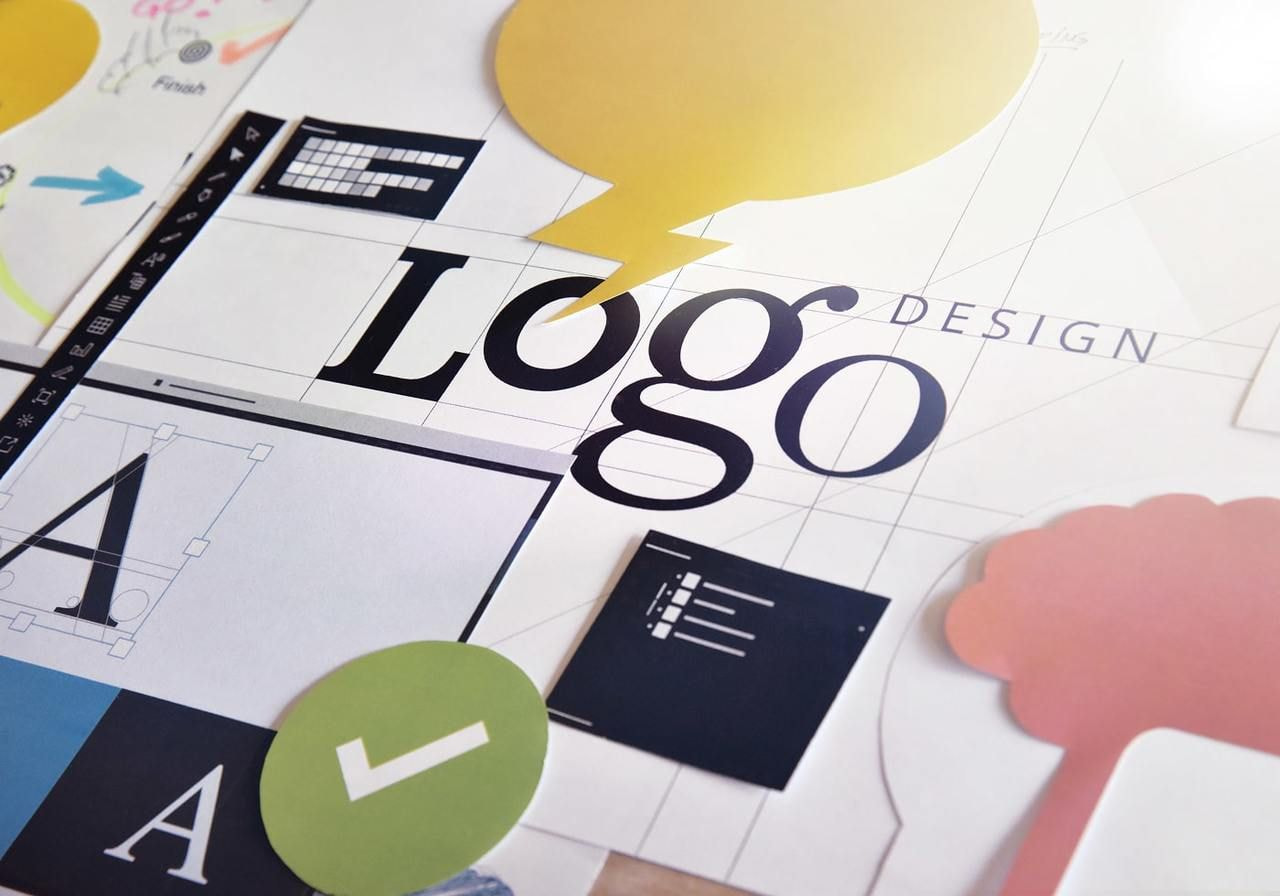What is Brand Identity and How to Get it Right from Day One
August 6, 2025 | by deven.khatri@gmail.com

What is brand identity?
Brand identity is all the visual and verbal elements that represent your brand and make it stand out from competitors. Brand identity elements include your logo, brand name, color palette, fonts, and graphic style, as well as your brand voice, mission, and values.
A well-defined brand identity creates a consistent look and feel that makes a lasting impression, helping your target audience connect with the brand in a meaningful way. It’s part of your brand strategy, affecting everything from your marketing tactics to how you talk to your customers.
Brand vs branding vs brand identity
Let’s take a look at how the brand identity definition compares with two other closely related yet distinct terms: brand and branding.
Here’s the difference:
-
Brand is the overall experience and emotional connection customers have with your company, product, and services. It includes your reputation, values, and the experience you deliver.
-
Branding is the process of building and managing your brand. It includes marketing materials, activities, and tactics you use to shape your brand experience.
-
Brand identity is the collection of visual and written elements that represent your brand, making it recognizable and memorable.
Think of it this way: your brand is how customers feel about your company, branding is what you do to influence that feeling, and brand identity is the tools you use in the process.
Why is brand identity important?
Brand identity matters because it’s how you shape the way customers feel about and interact with your company.
A strong brand identity:
-
Builds recognition. Consistent visual brand elements help customers remember your brand and distinguish it from competitors.
-
Establishes trust and credibility. A polished brand image encourages people to trust your company and feel confident about buying from you.
-
Creates an emotional connection. It helps communicate the personality and values that your target customers align with.
-
Supports marketing efforts. Clear brand identity guidelines make it easier to create your marketing materials and stay consistent.
Brand identity is the foundation of how people see, feel about, and connect with your business. Without a strong foundation, your brand risks being forgettable or seen as unreliable.
Key elements of a strong brand identity
Let’s take a closer look at the different elements of brand identity and how they work together to build a memorable brand.
Brand name
Word-of-mouth is one of the most effective marketing strategies, with 92% of customers trusting recommendations from people they know. However, word-of-mouth only works if those customers remember your company name.
Your brand name is often the first thing that customers encounter, and once you’ve created that first impression, it’s going to stick. You need to create the right associations from the get-go.
Pick a brand name that’s clear, easy to pronounce, and simple to spell. When you have an idea, say it loud, write it down, and Google it to ensure it’s not already used by another brand. Test it out with your friends, family, or even strangers – ask them about the imagery that comes to mind when they hear the name and make adjustments if necessary.
Logo

When it comes to brand recognition, your logo design can sometimes play a bigger role than the company name itself. It’s the detail that can make your brand instantly recognizable, even from a distance or at a tiny size.
The best logos are simple, memorable, and convey a sense of what your brand is about, even without the company name incorporated into the logo.
For logo inspiration, start by exploring free tools like Canva to experiment with shapes, colors, and fonts. Play around with different styles until you find one that feels right and complements your brand name.
Color palette
Choosing a color palette is another big part of your brand identity design. Your brand colors, like other elements, should remain consistent across your packaging, website, social media, and other materials.
Many brands establish primary and secondary colors – the main colors that define their identity and supporting colors that complement them. This maintains consistency while providing options for different design needs.
Following basic color rules to create balance by pairing opposite colors for contrast or similar ones for a smooth look. Colors affect emotions, so your chosen palette should match how you want customers to feel about your brand. For example, blue is often associated with calmness, while red can evoke excitement and energy.
Tip: Check our blog post Color Psychology in Ecommerce and Branding to find out more about color theory and how it can help build your brand identity.
Typography

Another key element in the visual part of your brand identity is typography. Brand fonts should look good with your logo and color palette and reflect your brand personality.
While some fonts are neutral, others can carry strong associations or evoke specific feelings. These associations can either work for or against your brand message.
It’s best to go with no more than two or three fonts – one for headings and one for the main text. They should be easy to read on all devices and materials, look good with your logo, and mesh well with your color palette.
Avoid overused fonts that might create the wrong associations for your brand. For example, Comic Sans is now mainly used as an ironic joke, not a serious brand font.
Imagery and graphic style
These are crucial visual elements that help define your brand beyond logos and colors. They include your photography style, illustration approach, icons, and overall design direction.
Your brand should reflect your company’s personality and values through every image. Whether you go for candid photography, polished illustrations, or bold graphics, these choices shape how people perceive your brand at first glance.
Brand voice and tone
Although your visuals will likely be the first thing to come to your customers’ minds, your voice and tone are also a massive part of your new brand identity.
Your brand’s verbal identity could be playful, professional, friendly, authoritative, or conversational. As long as it matches your customer expectations, you’re good to go. For example, if you sell luxury watches, a casual tone may undermine trust, while a formal approach for a kids’ toy brand will likely feel off.
Brand mission and values
Last but not least, your brand identity is closely linked to your mission and values – sometimes called your brand story. This is the foundation that all of your other elements are based on – the main thing you want to accomplish.
Whether you’re starting a small business selling mugs or a big company offering consulting services, your brand should have a clear purpose that goes beyond just making money.
How to build a brand identity from scratch

Now that we have covered all the elements, let’s walk through how to create a brand identity for a new business.
Know your audience and competition
Before you start designing logos or picking colors, you need to understand the audience you’re trying to reach. Knowing your target customers will make it much easier to build a successful brand identity.
Ask yourself:
Gather these insights through surveys, interviews, website analytics, and by seeing how your prospective customer base behaves on social media.
When doing market research, take a close look at your competitors’ brand personality – not just their prices and products. Check out successful brands in your niche, identify what makes them stand out, and see how they communicate with their audience.
Research their strengths and weaknesses, and use your findings to shape your own brand identity. But remember – don’t copy!
Define your mission and values

Your brand identity should be rooted in a strong, clearly defined mission – why your company exists, what you stand for, and where you’re headed. These elements guide everything from your tone of voice to your design choices.
Write down your core values and mission in simple, clear language. These should feel authentic to who you are as a business owner and reflect what matters most to your company. You should have about 3–5.
To get your wheels turning, let’s look at a basic example of brand mission and values – a business selling personalized coffee tumblers for bachelorette parties with a focus on sustainability.
Mission statement: To help brides and their besties celebrate unforgettable moments with stylish, personalized tumblers that keep the party going while being kind to the planet.
Values:
-
Celebrate the crew. We’re here for the bride and the bridesmaids. Every tumbler is a small way to say “you matter” in a big moment.
-
Customers as creators. Our customers aren’t just buyers – they’re co-designers. We listen, adapt, and build with them in mind.
-
Built to last. We use high-quality, eco-friendly, durable materials so your tumbler doesn’t end with the weekend – it lives on as a token of friendship.
These statements clearly tell customers what your brand stands for and inspire them to buy from you.
Create visuals

It’s time to bring your identity to life visually! This includes designing a logo, choosing a color palette, selecting brand fonts, and creating a consistent graphic style.
These elements should reflect your brand’s personality and appeal to your target audience. Think about how you want your brand to be perceived and use designs to express that.
No matter if you choose playful, professional, edgy, or minimalistic style, consistency is key. Make sure your visuals work across all platforms, from your website to social media. This will help your brand become recognizable and leave a lasting impression.
Try graphic design programs like Adobe Express, Illustrator, or Canva to create your logo. Browse different elements, shapes, and fonts and create several versions before deciding on the winner.
Valuable read: 10 Types of Logos (And How to Choose Yours)
Develop brand guidelines
Brand guidelines ensure that everyone who works on content or designs for your brand stays on the same page. They usually cover how to use your logo, brand colors, font, imagery, tone of voice, punctuation, and more. It’s a reference point for maintaining consistency across all channels – social media, website, email, and even packaging design.
Brand guidelines aren’t just for major companies. Even if you work alone or with a small team, a clear set of rules will help you stay consistent and build a professional, trustworthy brand presence over time.
Market your brand
Now it’s time to share your brand across every channel where your audience interacts with you. This is where effective brand management – monitoring how your brand appears and is perceived out in the world – becomes super important.
Use your visuals, messaging, and voice consistently across your website, social media profiles, packaging, email newsletters, content marketing materials, and other channels.
Every element should feel connected to your brand identity, whether someone is scrolling your Instagram feed or unboxing your product.
Consistency builds trust and recognition, so make sure your brand identity is fully integrated, not just in how things look, but in how you speak, engage, and present your company.
RELATED POSTS
View all



